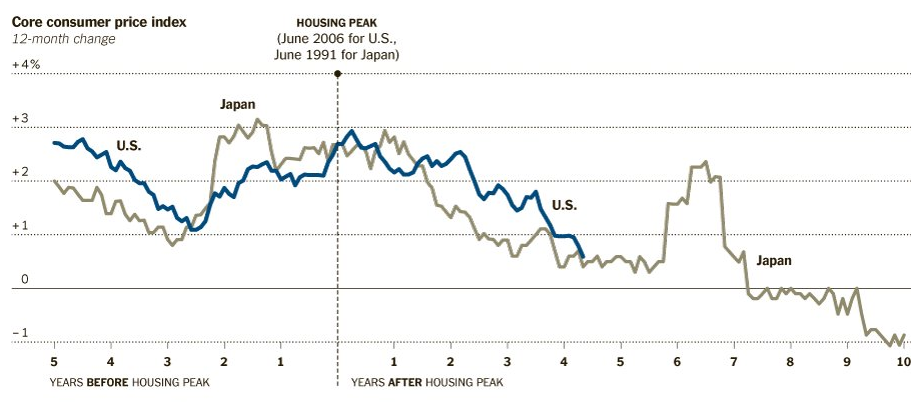Results 1 to 1 of 1
Thread Information
Users Browsing this Thread
There are currently 1 users browsing this thread. (0 members and 1 guests)
-
11-21-2010, 06:11 PM #1Senior Member


- Join Date
- May 2007
- Location
- South West Florida (Behind friendly lines but still in Occupied Territory)
- Posts
- 117,696
Following the Path of Japan and the Madness of Bernanke
Sunday, November 21, 2010 3:13 AM
Following the Path of Japan and the Madness of Bernanke Fighting Just That
I have been saying for 5 years the US would follow the path of Japan. An interesting chart in the New York Times shows this is indeed what has happened.

Following Japan's Path, So Far
In the United States, the core consumer price index, which excludes food and energy prices, rose 0.6 percent in the 12 months through October. That was the smallest 12-month gain since government calculating the figure in the 1950's. The chart shows the 12-month changes in core CPI for the US and Japan, in the years before and after housing prices peaked in each country.
The above chart and commentary is from After the Fedâs Action, Watching Inflationâs Trajectory http://www.nytimes.com/2010/11/20/busin ... harts.html
Since the collapse of the housing market in the United States and the beginning of the global financial crisis, the Federal Reserve has made avoiding deflation a major priority, recalling the experience of Japan after its bubble burst in the early 1990s. The Fed has set an annual inflation target of 2 percent or a little lower, but is not getting it.
The latest figures, released this week, showed that overall inflation in consumer prices was 1.2 percent in the 12 months through October, while the core inflation rate â excluding food and energy â rose just 0.6 percent. The previous low for that index, of 0.7 percent, came in the 12 months through February 1961, when the economy was in recession.
As the accompanying chart indicates, the core inflation figures are charting a path roughly similar to one shown in Japan 15 years earlier. That has been true despite a much stronger reaction by the American central bank, which was determined not to make the same mistakes the Japanese made.
This week, a group of Republicans proposed to change the Fedâs dual legal mandate, which calls on it both to keep inflation tame and to fight unemployment. âItâs time to return the Federal Reserve to the singular mission of protecting the fundamental strength and integrity of the dollar,âJoin our efforts to Secure America's Borders and End Illegal Immigration by Joining ALIPAC's E-Mail Alerts network (CLICK HERE)


 LinkBack URL
LinkBack URL About LinkBacks
About LinkBacks




 Reply With Quote
Reply With Quote

Call Congress Now To Stop Invasion Votes!
05-14-2024, 02:28 PM in Non-Citizen & illegal migrant voters